After a brush with $2,000 at the start of August, gold futures are back at their tiring mid-to-lower $1,900 range. Spot gold, more closely followed than futures by some traders, is emerging from a one-month low beneath $1,922.
On the contrary, the Dollar Index has gone gung-ho before the release of last month’s inflation numbers, hitting five-week highs at 102.655.
What will become of the yellow metal and the U.S. currency if the July reading for the Consumer Price Index comes in as forecast or proves a little higher or lower?
CPI Outlook
The United States is to release its latest reading for the CPI on Thursday, which will show how much further the Federal Reserve has to go with rate hikes.
A day before the CPI release, the U.S. will issue its July Producer Price Index data, with core producer prices expected to rise by 2.3% from a year earlier.
The CPI, which rose by 3.0% year-on-year in June for its smallest growth in two years, is expected to have seen a slightly more aggressive expansion of 3.3% in July. The Fed’s target remains just 2% per annum.
The Fed has identified runaway jobs growth and correspondingly higher wages — as well as trillions of dollars of relief spending over the 2020 coronavirus outbreak — as among the reasons for inflation hitting 40-year highs of more than 9% a year in June 2022.
While pandemic spending is over, jobs and wage growth have continued to fuel inflation, prompting the Fed to keep adding to interest rates.
Since March 2022, the central bank has hiked rates by 525 basis points from the previous 25. Its next rate decision is on September 20.
A lower CPI reading would make Fed policymakers more likely to hold off raising interest rates at their September meeting after a quarter-percentage-point hike in July.
While June’s growth in U.S. jobs was encouragingly smaller compared with May’s expansion of 306,000, wages were still higher than what the central bank desired.
Recently, Fed speakers have raised their hawkish ante, saying rates, already at a 22-year high, need to rise further as inflation remains above tolerable levels for average Americans.
“We have made progress in lowering inflation over the past year, but inflation is still significantly above the FOMC's two percent target, and the labor market continues to be tight, with job openings still far exceeding the number of available workers,” Fed Governor Michelle Bowman said in a speech on Monday, referring to the policy-making Federal Open Market Committee of the central bank.
“I expect that additional increases will likely be needed to lower inflation to the FOMC's goal.”
U.S. Dollar Index and CPI
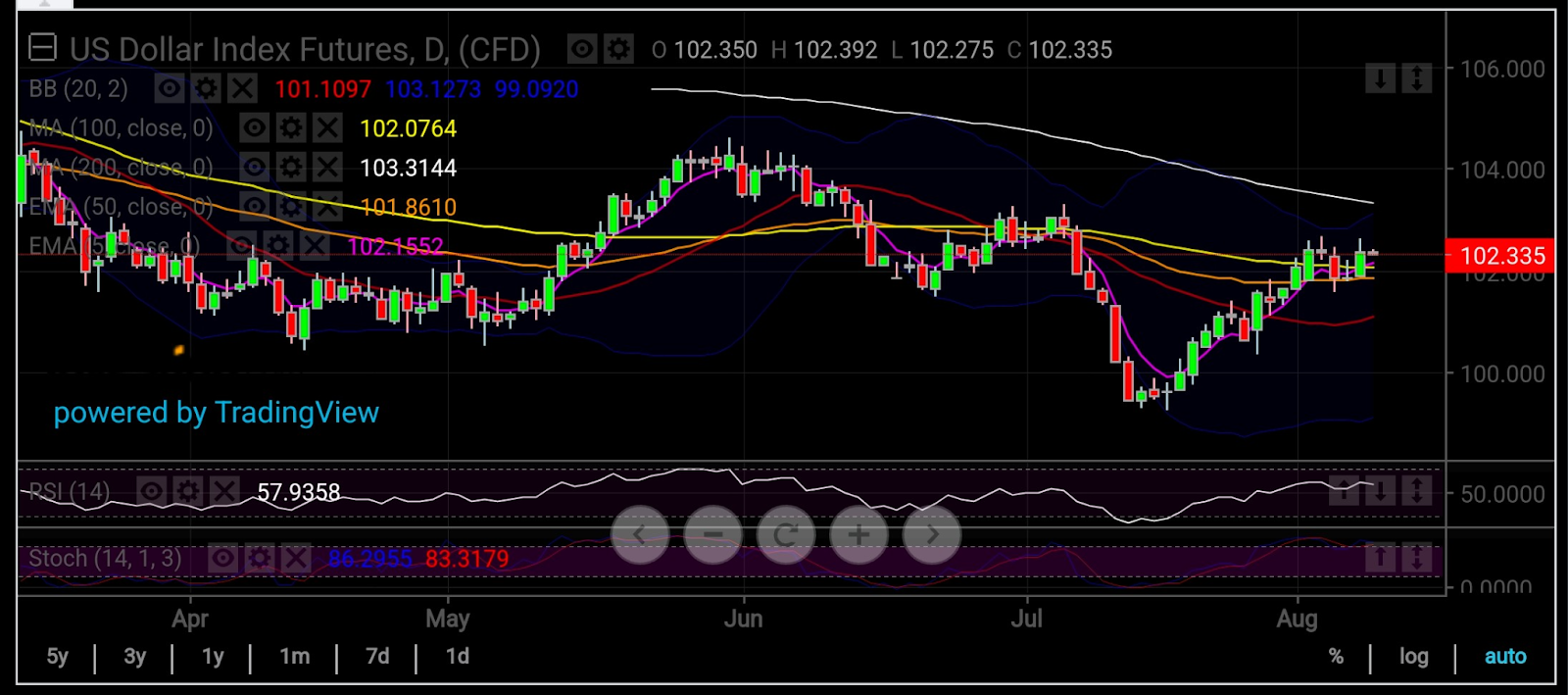
Charts by SKCharting.com, with data powered by Investing.com
- Scenario 1: CPI at above 3.3%
An annual CPI growth of 3.3% or higher for July will likely extend the run higher in the Dollar Index, or DX, as it’s known.
DX’s gains could take it towards the 50-week Exponential Moving Average, or EMA, that’s dynamically positioned at 102.90, said Sunil Kumar Dixit, chief technical strategist at SKCharting.com.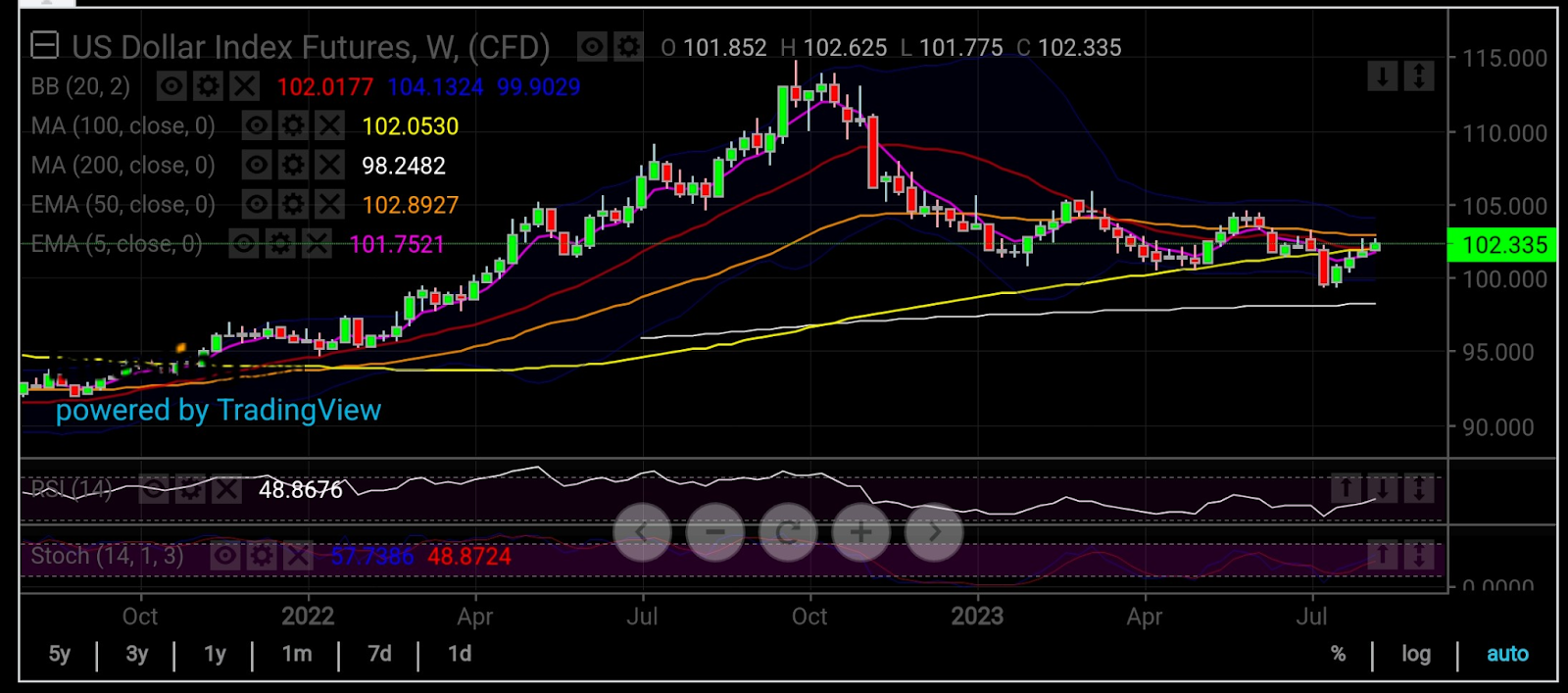 Dixit noted that DX’s rally, which began from July lows of 99.22, was approaching a decisive resistance zone, where rejection could push futures of the U.S. currency dollar towards support areas. But acceptance above the zone could give the index fresh legs higher, he said.
Dixit noted that DX’s rally, which began from July lows of 99.22, was approaching a decisive resistance zone, where rejection could push futures of the U.S. currency dollar towards support areas. But acceptance above the zone could give the index fresh legs higher, he said.
Resistance may come for DX at the monthly Middle Bollinger band of 103.20. But a stable, bullish short-term outlook may emerge if the index continues its march higher.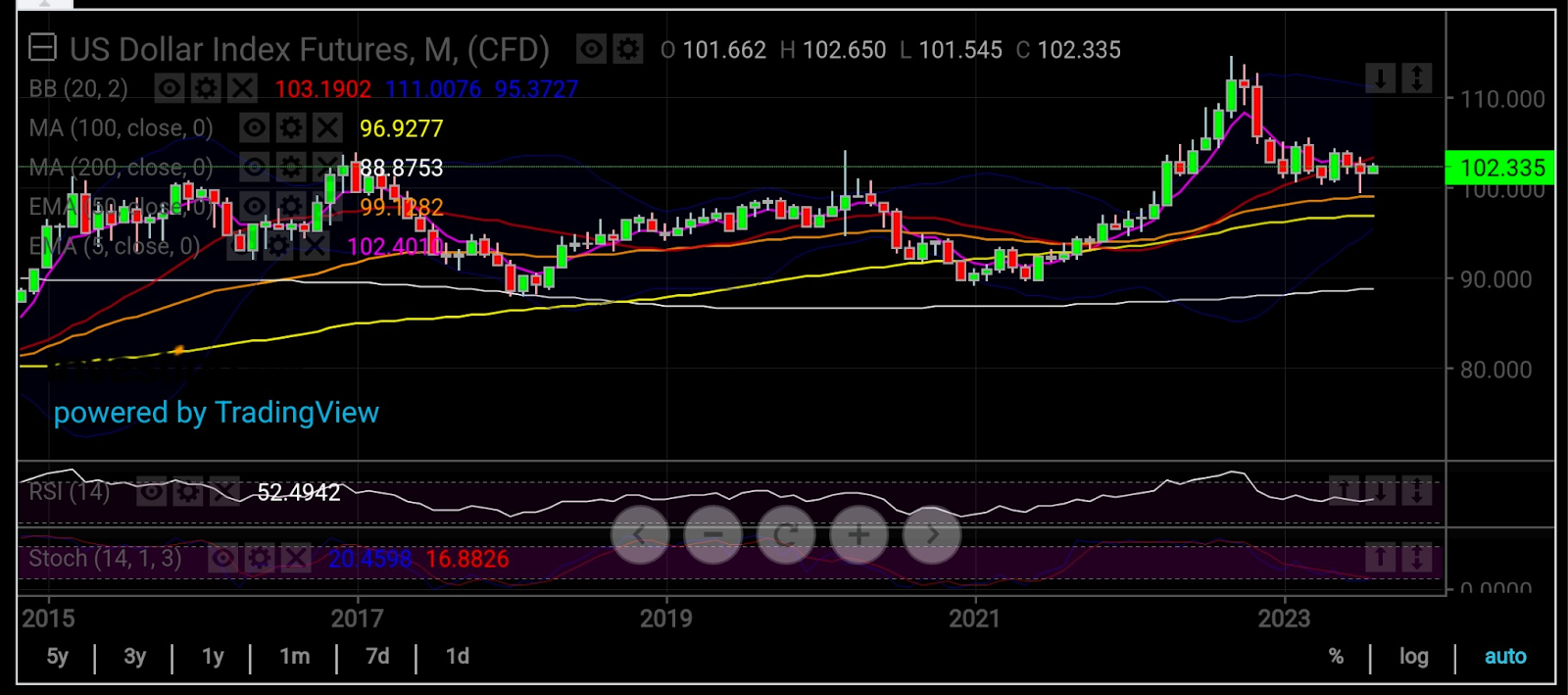
- Scenario 2: CPI at 3.3% or lower
An annual CPI growth of 3.3% or lower could short-circuit the rally in the DX.
A lower-than-expected reading for inflation can limit DX’s gains within the 102.90-103.20 resistance zone and attract sellers, taking the index toward the support areas aiming at the 50-Day EMA of 101.86 initially.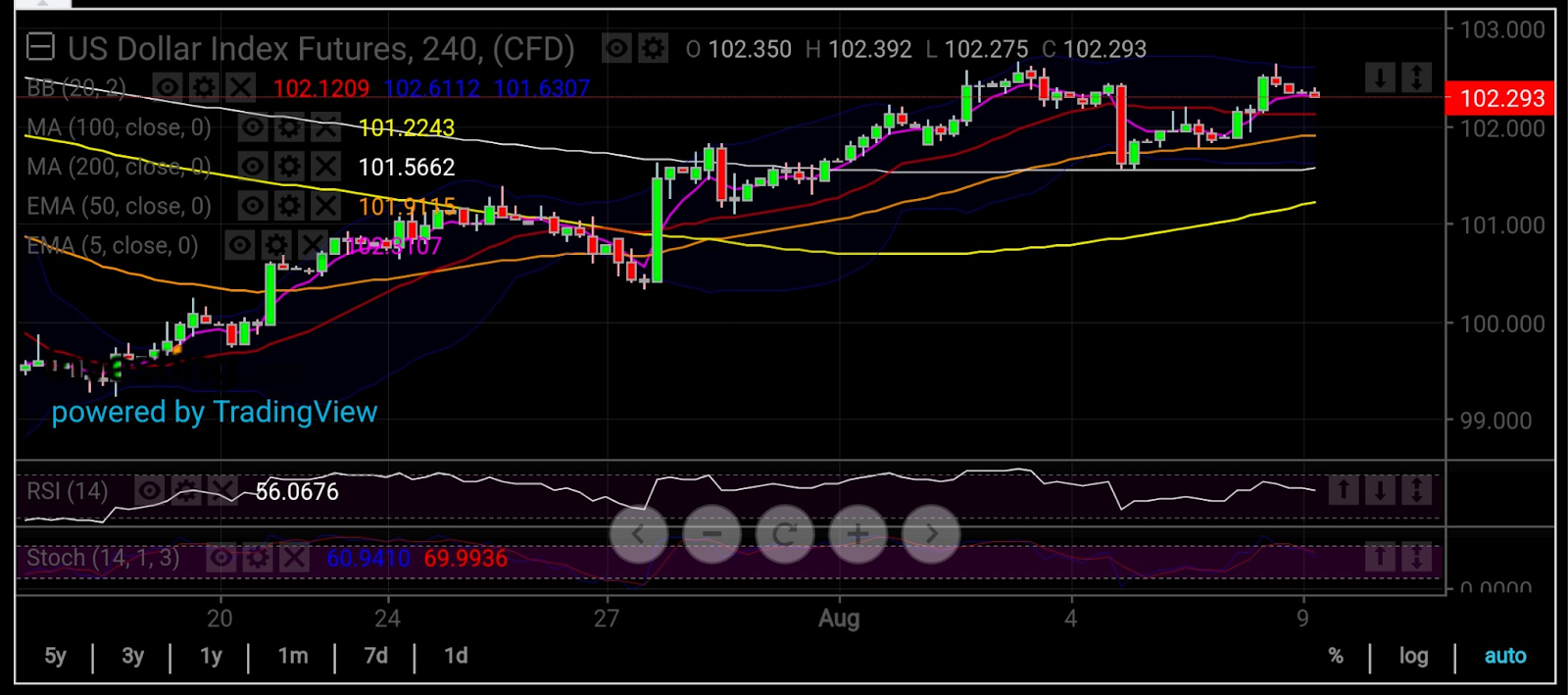
“A break below the zone will eventually extend the decline towards the next support at the Daily Middle Bollinger Band of 101.1,” Dixit added.
Gold and CPI
The rising dollar has kept gold bearish, with the spot price of the yellow metal trading below significant moving averages across the daily and weekly time frames.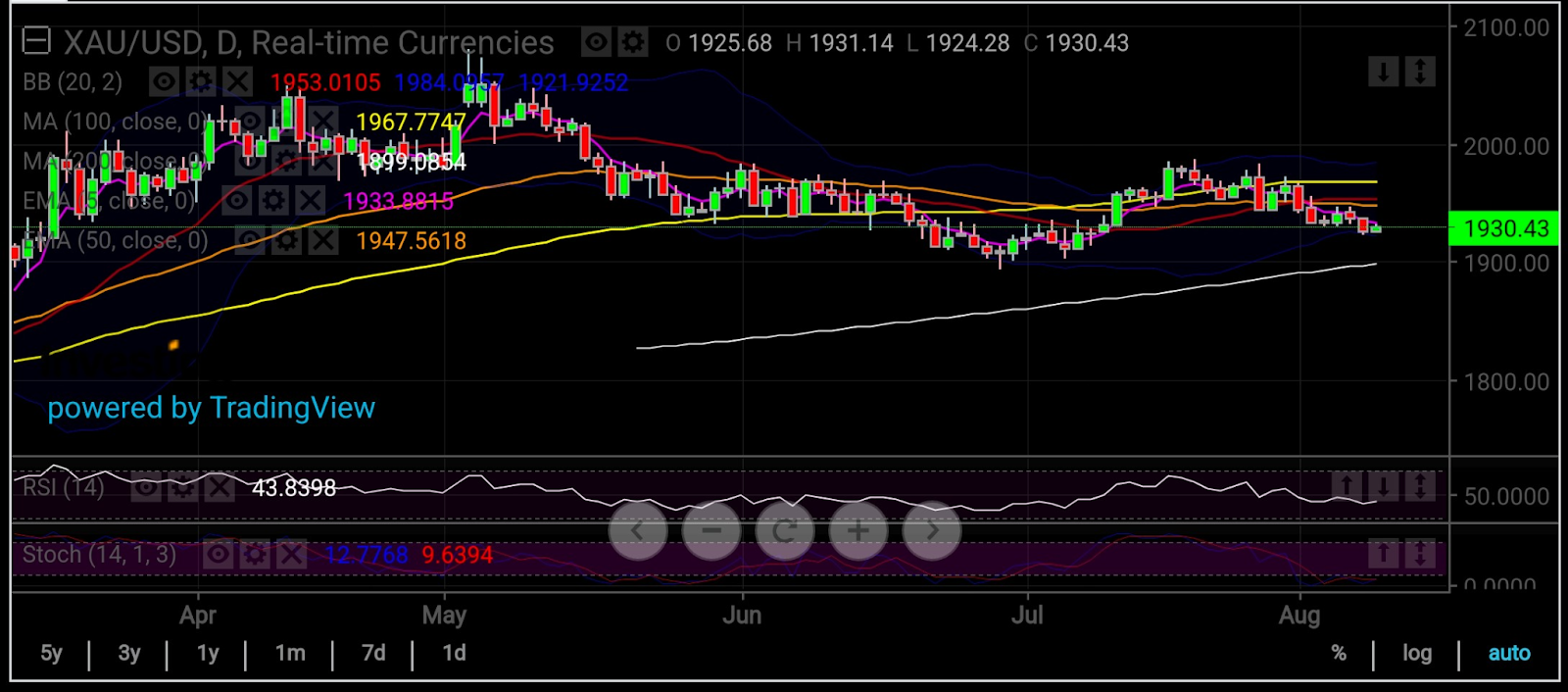
“Spot gold’s recent low of $1,923 remains vulnerable as long as prices sustain below the interim resistance zone of $1,932-$1,942,” said Dixit.
Strong buying momentum above this zone will eventually extend gold’s bullish rebound toward its next challenge — the 50-day EMA dynamically positioned at $1,948 and the Daily middle Bollinger Band at $1,953.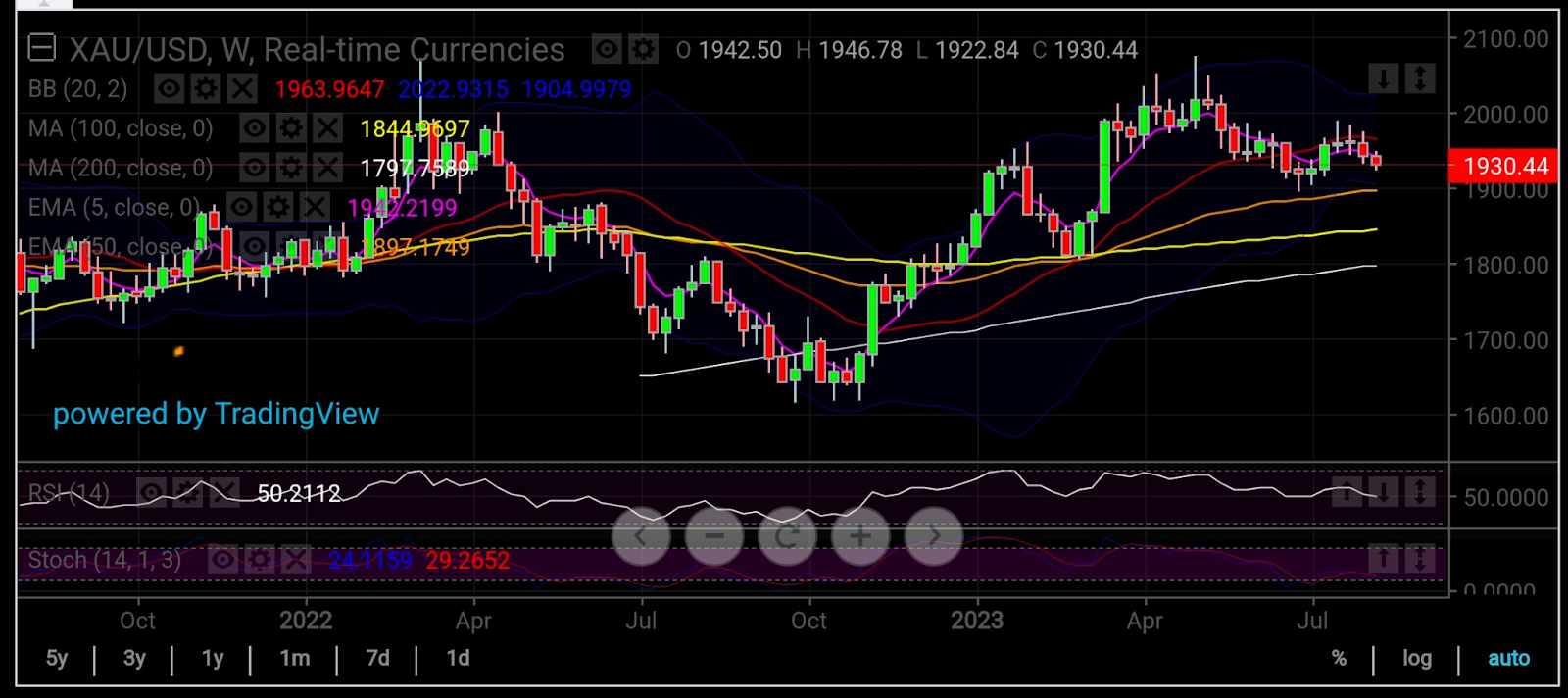 Sustainability above this zone will ease the path for the major upside resistance at the 100-Day Simple Moving Average, or SMA, of $1,968.
Sustainability above this zone will ease the path for the major upside resistance at the 100-Day Simple Moving Average, or SMA, of $1,968.
On the downside, a sustained break below $1,923 will extend spot gold’s decline towards $1,913 and the 50-week EMA of $1,897, which can act as support for the short-term, providing room for some bounce back through the extent of the move itself may be limited.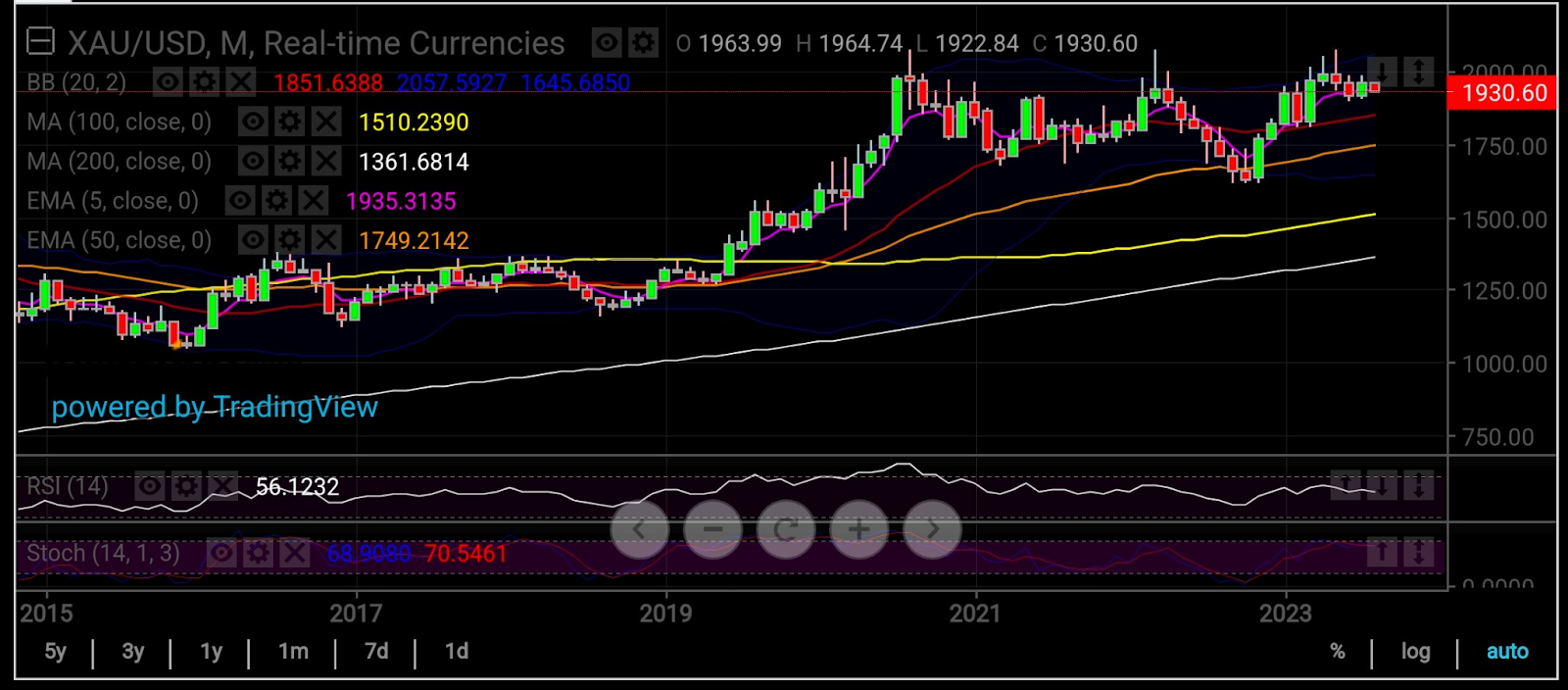
- Scenario 1: CPI at 3.3% or higher
If July CPI shows an annual growth of 3.3% or more, the dollar’s likely run higher could cause gold to drop towards $1,913 within the first 72 hours of the data and drop further toward the 50-week EMA of $1897 over the course of the week.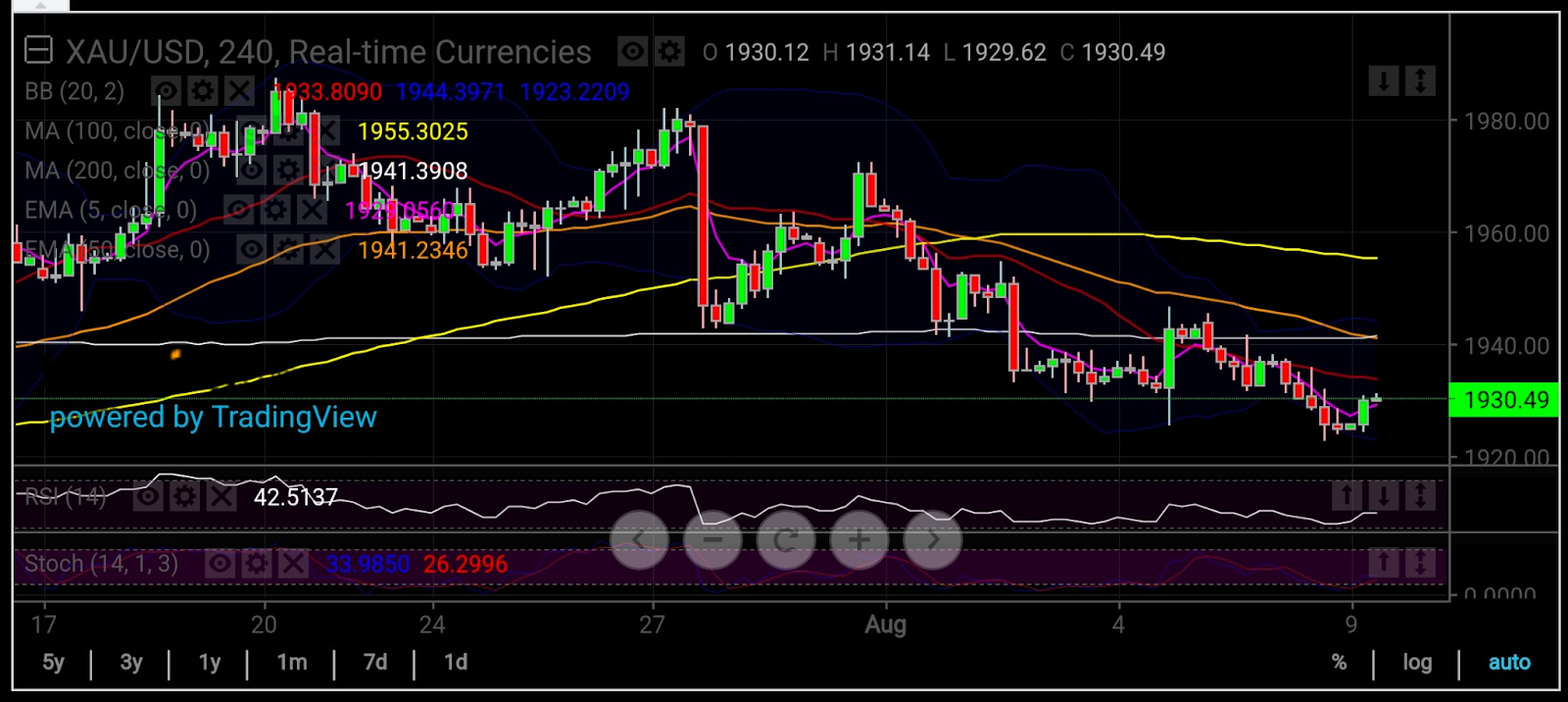
The renewed attack on the 50-week EMA of $1,897 and a break below the zone will eventually extend the bearish correction toward the Monthly Middle Bollinger Band of $1,851 and the 100-Week SMA of $1,845.
- Scenario 2: CPI at 3.3% or lower
If the CPI number shows a yearly growth of 3.3% or less, DX may witness a corrective decline towards the support zone, resulting in gold gaining some higher ground.
In the first 72 hours of such CPI data, spot gold could clear through the interim resistance zone of $1,932-$1,942, Dixit said.
“Eventually, the target of gold bulls would be the 50-Day EMA that’s dynamically positioned at $1,948, followed by the Daily Middle Bollinger Band of $1,953,” he said.
Beyond that, Dixit added that the major upside target would be the 100-Day SMA of $1968.
***
Disclaimer: The content of this article is purely to educate and inform and does not in any way represent an inducement or recommendation to buy or sell any commodity or its related securities. The author Barani Krishnan does not hold a position in the commodities and securities he writes about. He typically uses a range of views outside his own to bring diversity to his analysis of any market. For neutrality, he sometimes presents contrarian views and market variables.
